College Biology - Cellular Respiration Test
1/26
Earn XP
Description and Tags
Test 4
Name | Mastery | Learn | Test | Matching | Spaced |
|---|
No study sessions yet.
27 Terms
Why do we need oxygen? (COLLEGE LEVEL)
To make ATP
Energy from food “reloads” ATP
Oxygen is the final electron accepter in the making of ATP
ATP (Adenosine Triphosphate) - what it looks like
Fully charged battery
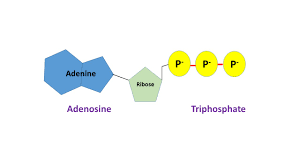
ADP (Adenosine Diphosphate) - what it looks like
Partially charged battery
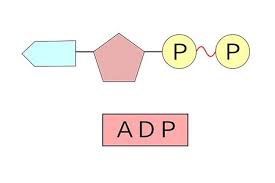
Redox Reactions - two types
Oxidation AND Reduction
Oxidation
Loses electrons
Reduction
Gains electrons
Redox Reactions - how they work
In cells, when one substance is oxidized another is reduced
Transfer of electrons from one molecule to another molecule
NAD (Nicotinamide Adenine Dinucleotide) - two types
NAD+AND NADH
NAD+
Empty bucket
NADH
Full bucket
NAD (Nicotinamide Adenine Dinucleotide) - traits
Electron Carrier
Referred to as a “bucket”
Can carry 2 electrons
Redox Reaction
Glycolysis - bullet list
First to evolve
Least efficient
“Sugar splitting”
Happens in cytoplasm
Glycolysis - diagram + “must knows”
MUST KNOW:
Glucose
Fructose-1,6-Diphosphate
PGAL
Pyruvix Acid
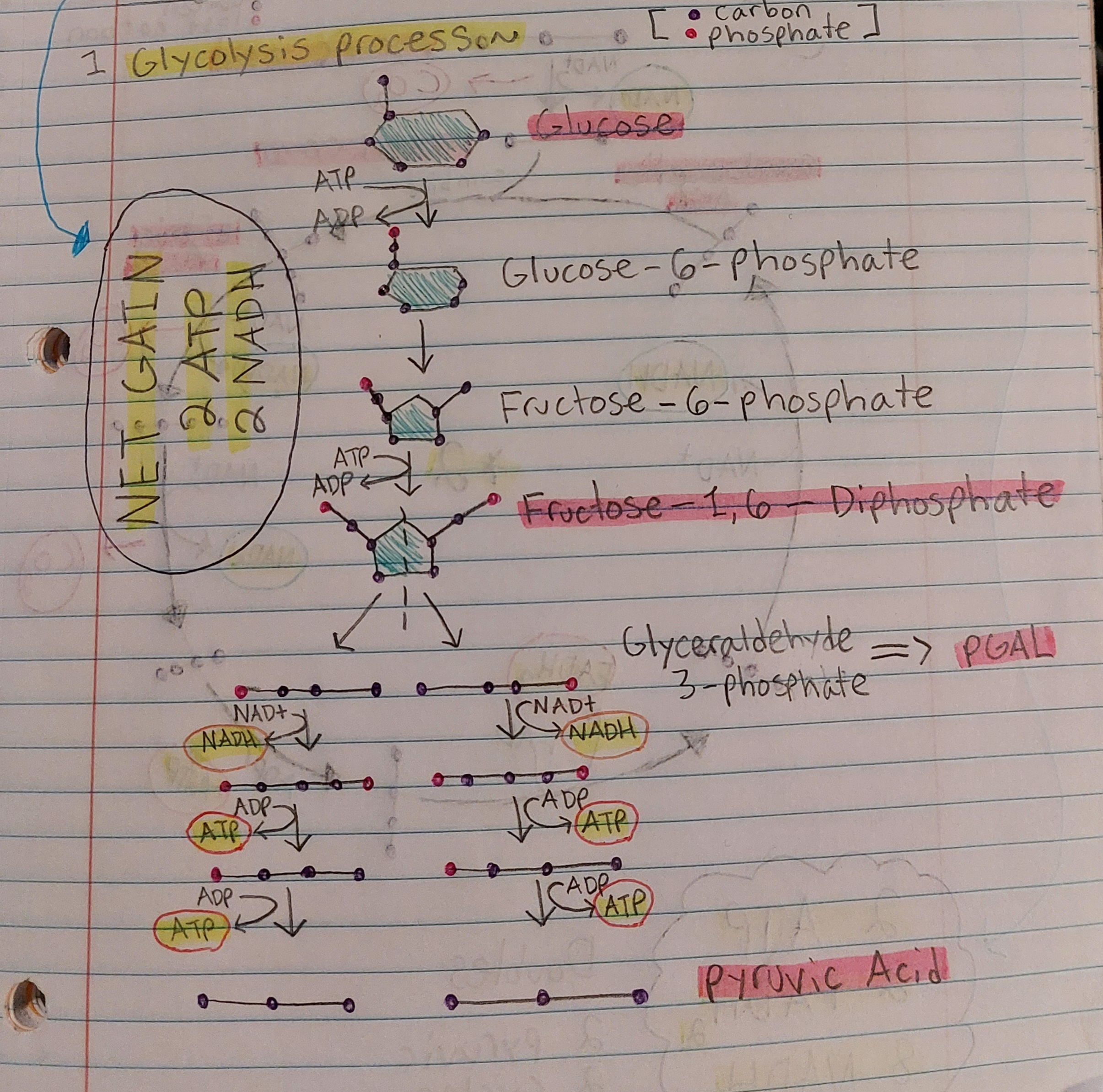
Glycolysis - net gain
2 ATP
2 NADH
Fermentation
If no oxygen is available
Anaerobic respiration
Alcoholic (yeast and bacteria)
Lactic Acid (muscles and bacteria)
Krebs Cycle - bullet list
AKA “Citric Acid Cycle”
Happens in Matrix of Mitochondria
2 turns per glucose (2 pyruvic acid)
Krebs Cycle - diagram + “must knows”
MUST KNOW:
Pyruvic Acid
Acetyl Co-a
Citric Acid
Oxaloacetic Acid
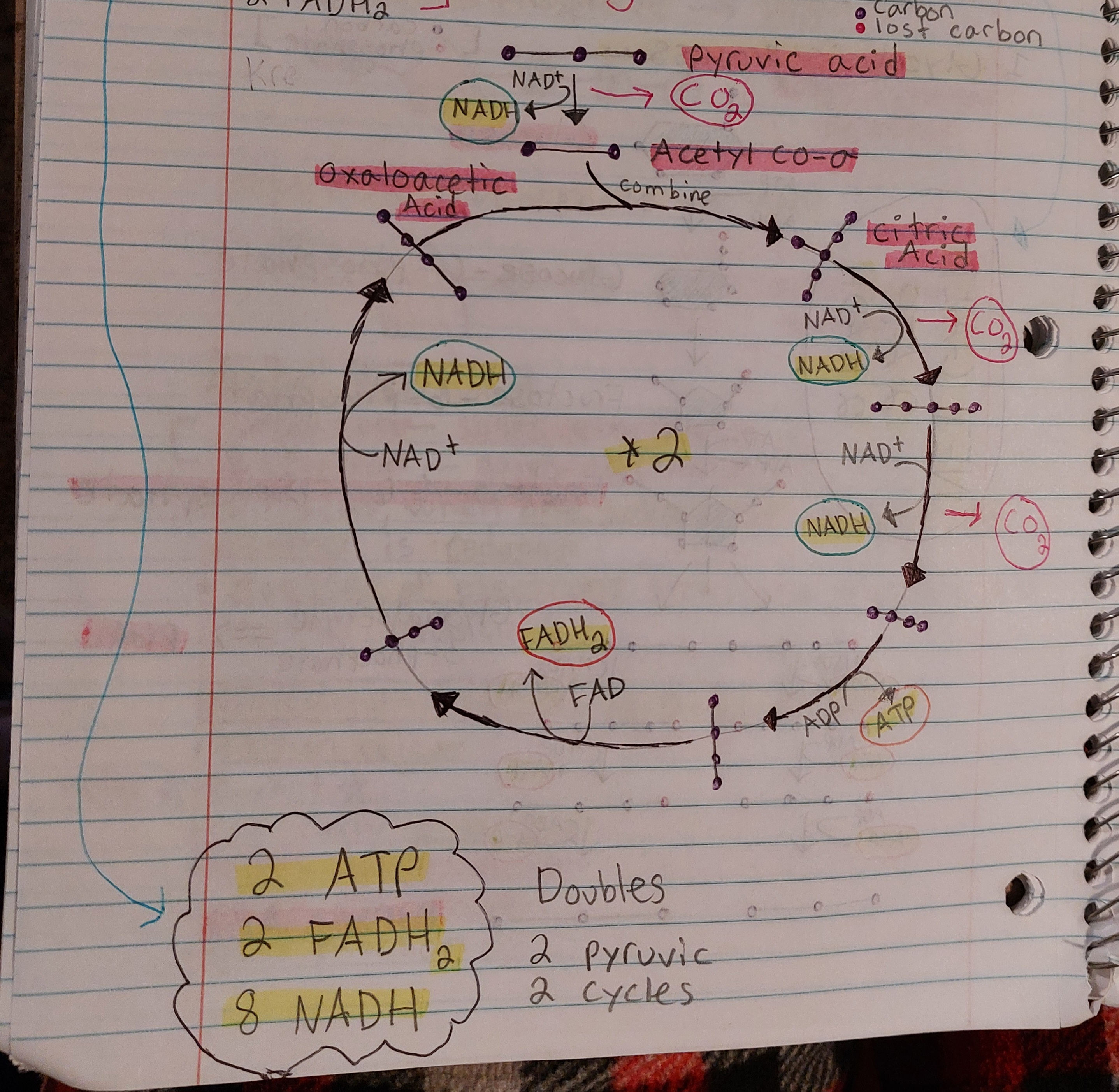
Krebs Cycle - net gain
Note: goes around twice, so double the diagram
2 ATP
8 NADH
2 FADH2
ETC: Electron Transport Chain - bullet list
MAIN EVENT
Happens in Cristae of Mitochondria
Electrons from NADH and FADH2 are used to make ATP
ATP Synthase
ETC: Electron Transport Chain - diagram
Note 1: Electrons go down
Note 2: Pay attention to small details
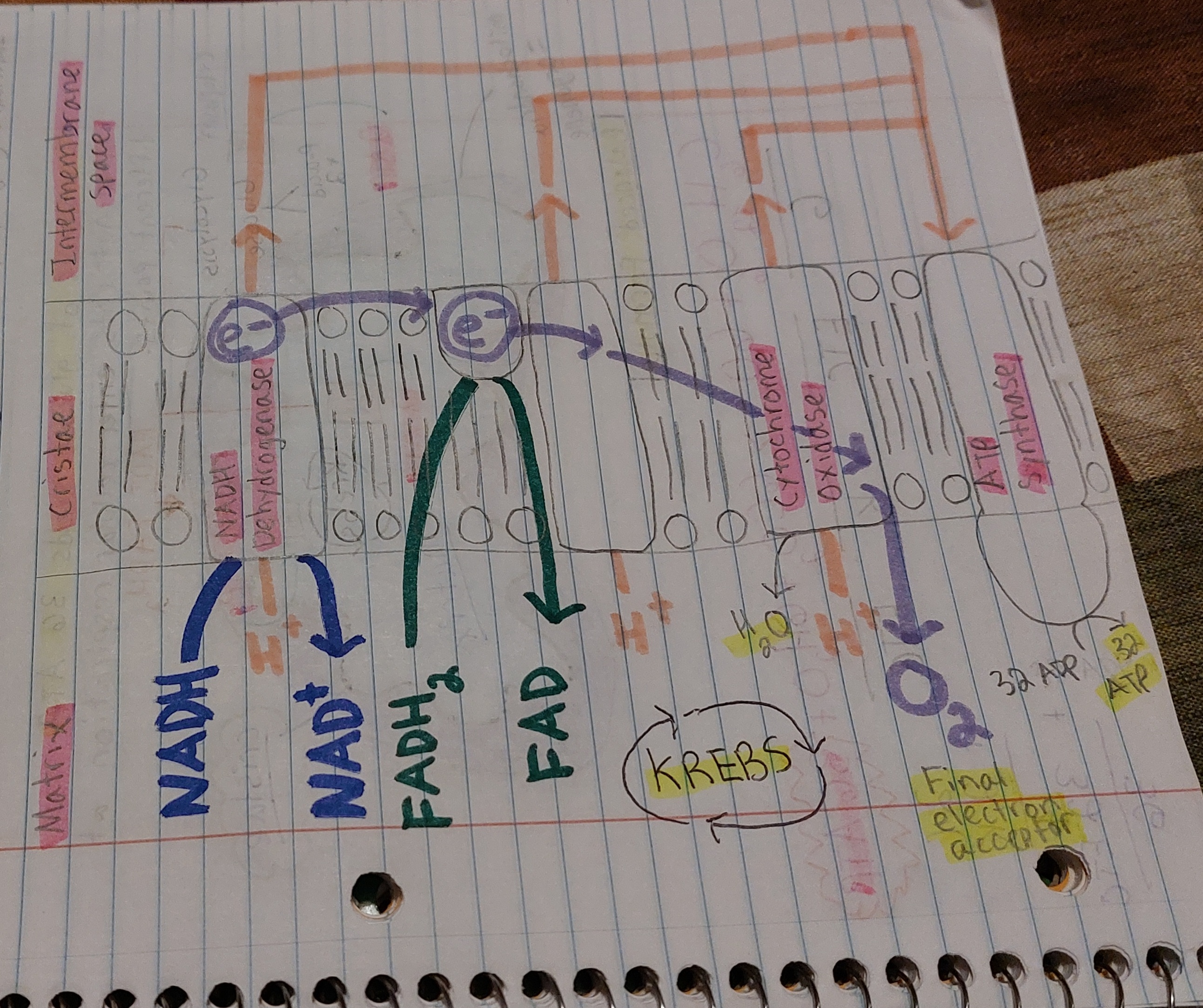
ETC: Electron Transport Chain - net gain
32 ATP
Net Gain / Gain Summary - Glycolysis
2 NADH and 2 ATP
Net Gain / Gain Summary - Krebs
8 NADH, 2 ATP, and 2 FADH2
Net Gain / Gain Summary - ETC
(Note: -2 ATP for Active Transport)
10 NADH — 30 ATP
2 FADH2 — 4 ATP
How much ATP does 1 molecule of glucose yield in total?
36!
How much ATP is gained from all 3 steps?
2 ATP from Glycolysis
2 ATP from Krebs Cycle
32 ATP from Electron Transfer Chain
Balanced Formula
C6H12O6 + 6O2 — 6CO2 + 6H2O + 36 ATP